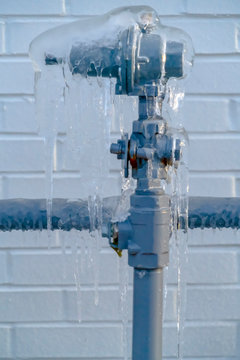Crucial Advice for Avoiding Frozen Pipes in Cold Weather Seasons
Crucial Advice for Avoiding Frozen Pipes in Cold Weather Seasons
Blog Article
How do you really feel when it comes to How to prepare your home plumbing for winter weather?

Winter can wreak havoc on your plumbing, particularly by freezing pipes. Here's how to prevent it from happening and what to do if it does.
Introduction
As temperature levels decrease, the danger of icy pipelines rises, possibly leading to costly repairs and water damages. Comprehending just how to prevent icy pipes is crucial for property owners in cool climates.
Prevention Tips
Protecting prone pipes
Wrap pipes in insulation sleeves or use warm tape to secure them from freezing temperatures. Concentrate on pipes in unheated or outside areas of the home.
Home heating strategies
Maintain indoor areas sufficiently heated up, especially areas with plumbing. Open up cupboard doors to permit cozy air to distribute around pipes under sinks.
Exactly how to recognize icy pipelines
Seek reduced water circulation from taps, uncommon odors or sounds from pipes, and noticeable frost on revealed pipes.
Long-Term Solutions
Architectural modifications
Consider rerouting pipelines far from outside wall surfaces or unheated areas. Add extra insulation to attic rooms, cellars, and crawl spaces.
Updating insulation
Buy high-quality insulation for pipelines, attic rooms, and walls. Proper insulation aids preserve consistent temperature levels and minimizes the danger of frozen pipes.
Securing Outside Pipes
Garden hoses and outdoor taps
Disconnect and drain yard hoses before winter. Set up frost-proof faucets or cover outdoor faucets with protected caps.
Understanding Frozen Pipes
What creates pipelines to freeze?
Pipes freeze when revealed to temperatures below 32 ° F (0 ° C) for prolonged durations. As water inside the pipelines freezes, it broadens, taxing the pipeline wall surfaces and possibly triggering them to burst.
Threats and damages
Frozen pipes can bring about supply of water interruptions, residential property damages, and costly repair services. Burst pipes can flooding homes and create extensive architectural damages.
Indications of Frozen Water Lines
Determining frozen pipelines early can stop them from rupturing.
What to Do If Your Pipes Freeze
Immediate activities to take
If you presume icy pipes, keep taps open to relieve stress as the ice melts. Make use of a hairdryer or towels taken in hot water to thaw pipelines slowly.
Conclusion
Stopping frozen pipelines requires positive measures and quick responses. By comprehending the reasons, indications, and preventive measures, house owners can shield their plumbing during winter.
5 Ways to Prevent Frozen Pipes
Drain Outdoor Faucets and Disconnect Hoses
First, close the shut-off valve that controls the flow of water in the pipe to your outdoor faucet. Then, head outside to disconnect and drain your hose and open the outdoor faucet to allow the water to completely drain out of the line. Turn off the faucet when done. Finally, head back to the shut-off valve and drain the remaining water inside the pipe into a bucket or container. Additionally, if you have a home irrigation system, you should consider hiring an expert to clear the system of water each year.
Insulate Pipes
One of the best and most cost-effective methods for preventing frozen water pipes is to wrap your pipes with insulation. This is especially important for areas in your home that aren’t exposed to heat, such as an attic. We suggest using foam sleeves, which can typically be found at your local hardware store.
Keep Heat Running at 65
Your pipes are located inside your walls, and the temperature there is much colder than the rest of the house. To prevent your pipes from freezing, The Insurance Information Institute suggests that you keep your home heated to at least 65 degrees, even when traveling. You may want to invest in smart devices that can keep an eye on the temperature in your home while you’re away.
Leave Water Dripping
Moving water — even a small trickle — can prevent ice from forming inside your pipes. When freezing temps are imminent, start a drip of water from all faucets that serve exposed pipes. Leaving a few faucets running will also help relieve pressure inside the pipes and help prevent a rupture if the water inside freezes.
Open Cupboard Doors
Warm your kitchen and bathroom pipes by opening cupboards and vanities. You should also leave your interior doors ajar to help warm air circulate evenly throughout your home.

I hope you liked our topic about How to Prevent Your Pipes From Freezing. Thanks a lot for spending some time to read our article. Appreciated our piece? Please quickly share it. Let someone else find it. Thanks for taking the time to read it.
Book Your Service Report this page